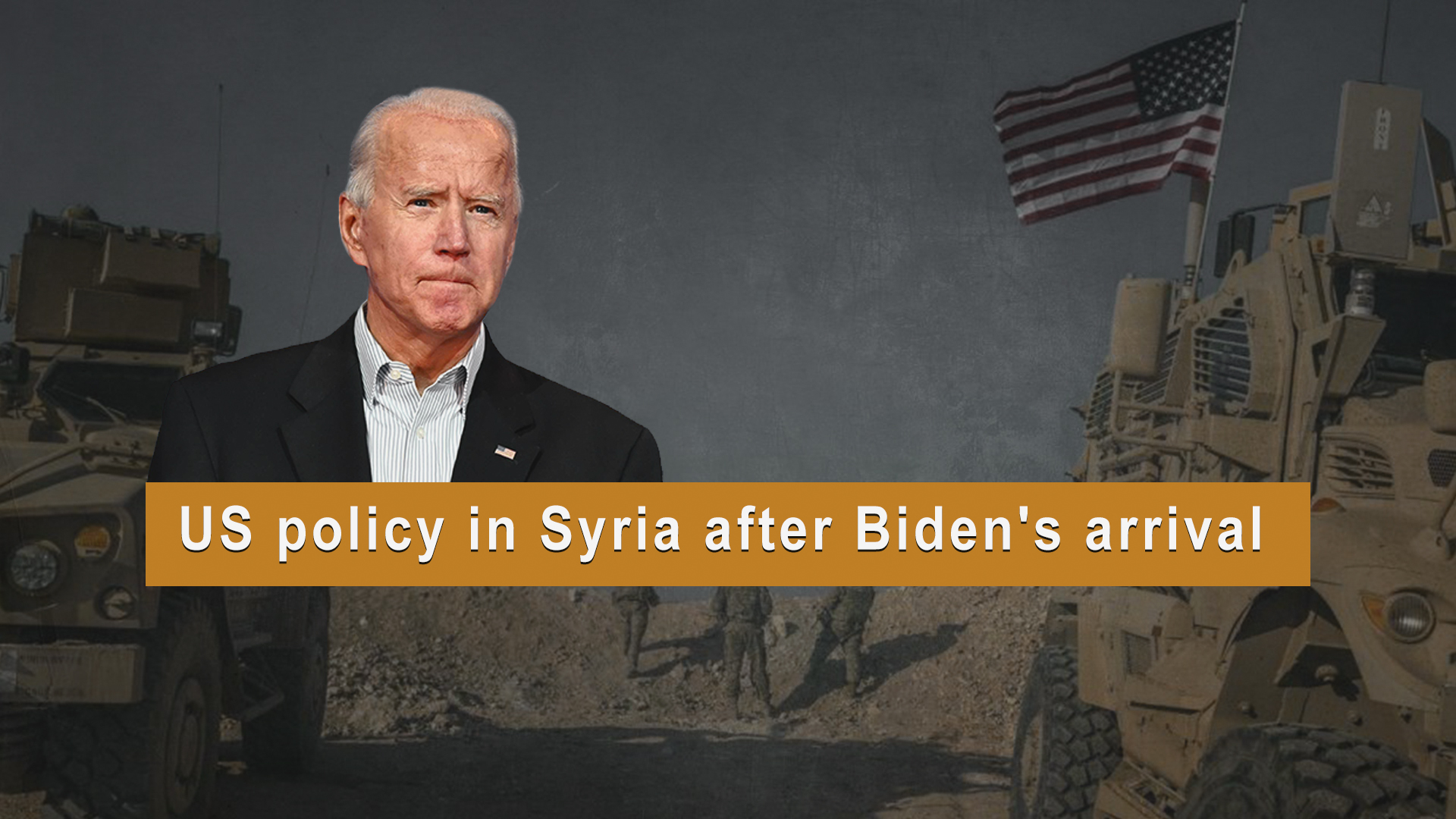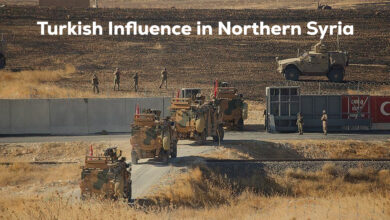US policy in Syria after Biden’s arrival

The United States lost part of its credibility in front of its allies and partners in the world due to Trump’s economic policy and the weakness of the Obama administration, matched by a Russian-Chinese expansion that threatens the US interests in the world, especially in the Middle East, including Syria. However, with the arrival of Joe Biden, the US began to work to restore its position. Lloyd Austin, the US Secretary of Defense, considered that Russia and China have been seeking to expand their influence in the Middle East in the recent period “by increasing arms sales in order to drive a wedge between us and our partners.” He mentioned that among the possible fields of cooperation with Russia, are arms control, combating terrorism, preventing the spread of weapons of mass destruction, and settling military conflicts in the areas where the US and Russian forces operate in close proximity to each other. This is a clear indication that the Syrian issue will be one of the Biden administration’s priorities, as Syria, with its strategic location, constitutes a gateway to Russian expansion in the Middle East. With its intervention in the Syrian crisis, Russia has transformed Syria into an advanced military base equipped with the latest weapons, the S400 and S300 system, combat aircraft, Sukhoi Su-24 aircraft, attack helicopters, surveillance and sensor aircraft, warships equipped with 3M-54 Kalibr missiles, expanding the Tartous naval base, and strengthening the base with anti-submarines, and it is now making adjustments to the runway of the Khmeimim Air Base, which would allow receiving long-range strategic aircraft capable of carrying nuclear weapons at the Russian base. This would change the geopolitical balance in the Middle East in favor of Russia and threaten the US interests in the region, in addition to the success of Russian policy in driving a wedge between the US and Turkey through purchasing the Russian S400 system.
To face the Russian threat, the US decided to keep its forces in the Autonomous Administration regions, expand some of its bases and supply them with advanced weapons. By imposing the Caesar Act on the regime, the US aims at making Syria a quagmire for the Russian military presence by increasing economic pressure on it and denying it to access to Syrian resources. Therefore, Russia is trying by various means and through international mobilization to pressure the US to lift the sanctions under the pretext of the poor economic and living conditions in Syria. Also, the US supply of modern weapons to Greece could be included within the framework of encircling the Russian military presence in Syria. Therefore, the American military presence in northeastern Syria is not limited to implementing Resolution 2254, starting the process of political transformation in Syria and fighting ISIS. Rather, it lies in stopping the Russian military and economic expansion in the region, along with Iranian expansion and protecting Israel’s security, which was expressed by Austin, who noted that among the main US tasks is “to deter Russia and limit its action against the vital American interests, including protecting our allies from military aggression.” However, the US policy towards Turkey, a member of NATO, differs from one issue to another. It believes that the recent Turkish invasion in the eastern Euphrates regions, in Tel Abyad (Gire Spi) and Sere Kaniye (Ras al-Ain), had negative effects on the American presence and allowed Russian penetration in the region along with the S400 deal. On the one hand, the US supports Turkey in Idlib and prevents Russia and the regime from launching any large-scale military operation in Idlib. This came in a tweet published by the spokesman for the US State Department, Ned Price, who made it clear that the US would support Turkey’s position in Idlib in order to maintain calm in that region. Therefore, the biggest challenge to the Biden administration is the Turkish role in Syria and its bias towards Russia in the Syrian crisis, and in how to end the US-Turkish disputes. Some Arab and Western media outlets reported that there is a deal looming between the US and Turkey, and that Turkey is promoting it. The deal is related to Washington’s stopping its support for the SDF in exchange for Ankara’s abandoning its extensive use of the Russian S400 system and not purchasing new batches of the system. However, the facts are not consistent with such a deal, if the US prevents Russia and the regime from carrying out any military operation against Idlib, which is the stronghold of terrorist groups, it is more useful for it to preserve the Autonomous Administration areas, its partner in the fight against terrorism. There are other files that can be traded without the US losing its partner in fighting ISIS, such as the sanctions, the Fethullah Gulen, the Halkbank, and the Idlib file …..etc. The US is fully aware that implementing the Turkish demands means losing the SDF and losing its areas of influence in favor of the Russians. American presence in Syria is linked to its partnership with the SDF. As for bartering its partner, the SDF, for the S400, it is unlikely for Joe Biden’s administration. The previous US administration, the Trump administration, was appropriate to conclude such a deal by virtue of the personal relations that brought the two parties together, but that did not happen.
The new American administration, which is working to restore the status of the US as a global power and a reliable ally, will work to rearrange its foreign policy, end the differences between the allies and preserve its partners without prejudice to its strategic interests in order to be able to confront the Russian and Chinese expansion. Thus, the American policy and its presence in Syria are faced with two options:
First: The permanent presence in north and east Syria: It falls within the scope of standing in the face of the Russian expansion and not allowing it to be alone in Syria. The US forces will remain in the Autonomous Administration areas, whether a political solution is reached to end the Syrian crisis or the crisis continues.
Second: Withdrawal from Syria will be done in the following cases:
1- Handing over the file of combating ISIS to Turkey by handing it over the leadership of the Global Coalition to defeat ISIS, which Trump referred to after the Turkish invasion of Tel Abyad (Gire Spi) and Sere Kaniye (Ras al-Ain) regions. This requires Turkey to disengage from its association with Russia and conclude a peace process between Turkey and the SDF, as it is the active force on the ground to fight ISIS.
2- Reaching an agreement with Russia in exchange for the US withdrawal from Syria. This may stipulate an almost complete Russian withdrawal, the withdrawal of the advanced S400 weapons and warplanes, the reduction of the number of Russian forces, and the transformation of Syria into a demilitarized zone, along with the Iranian and Turkish withdrawal and the implementation of international Resolution 2254 with the normalization of relations with Israel.
The US policy in Syria and its military presence in Syria is either linked to the Syrian crisis, reaching a political solution in accordance with the Resolution 2254 and preventing the emergence of ISIS in accordance with Russia or Turkey, and thus, the US military presence in Syria will be temporary, or it is linked to the Russian military presence in Syria and the Chinese economic expansion in the Middle East region, and thus, its presence is due to its national security and protection of its areas of influence. Here, the US presence will be long-term and strategic, especially with the loss of stability in Iraq and the ongoing negotiations with the Taliban to withdraw its forces from Afghanistan.




